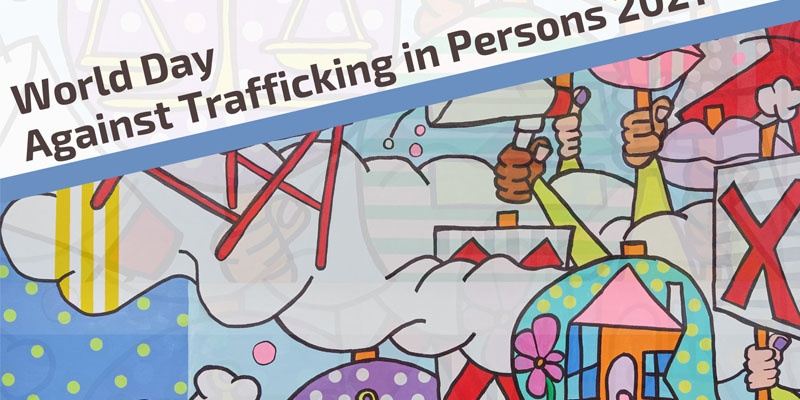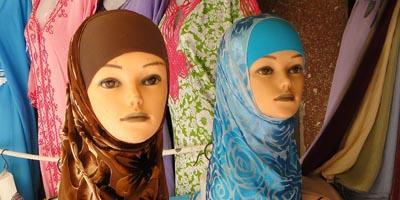In 2019, when two girls were kidnapped and possibly murdered in the city of Caracal, the high-profile case brought the severity of human trafficking and the police shortcomings to the Romanian public. These kidnappings were investigated as murders rather than kidnappings despite the girls being kidnapped on separate occasions and numerous claims by the parents that they had been contacted by child traffickers. Why were these kidnappings investigated as murders?
This story must be understood in the context of Romania as a post-communist state, separated from its lengthy and harsh communist period by just thirty-two years. It has a number of issues to deal with, perhaps explaining the limited response and mobilization with regard to human trafficking. In the years since the bloody revolution in December, 1989, which ended with the assassination of its then-leader Nicolae Ceausescu and his wife Elena Ceausescu, the country has gone through a tumultuous period of transition, struggling to shake off the persistent corruption that was ingrained in the communist period. Within the last 32 years, the country has had 25 different prime ministers.

During my recent visit to Romania, I could see that human trafficking presents a concern to women in Romania, who do not always feel safe walking around alone, especially at night. These fears are due in part to human trafficking. However, when speaking to people in Romania about the main issues that concern them in the country, human trafficking did not come up as often as did corruption and the economy. So, although people fear human trafficking they are not so much thinking of it in terms of a societal issue, but rather just on a personal scale.
In order to gain more insight on the current state of human trafficking in Romania I spoke with two experts:
- Radu Cucos – Associate Officer on Combating Trafficking in Human Beings at the Organization for Security and Co-operation in Europe (OSCE)
- Dana Pirvu – Social Assistant at Asociatia Alternative Sociale [The Social Alternative Association] in Iasi
Following the Caracal Case, the increased awareness of the issue of human trafficking in Romania left many outraged, and there were protests in the capital, but two years on little progress has been made. Radu Cucos referred to what he called the “persistent pattern of Romania being the major country of origin in Europe” in terms of human trafficking that, he says, “speaks to the persistent challenges in addressing the true scale and scope of this crime in the country.”

When looking at recommendations made by both the OSCE in its country visits and in the 2020 Trafficking in Persons Report (TIP Report) by the U.S. State Department’s Office to Monitor and Combat Trafficking in Persons, it is apparent that the country is struggling to keep up with recommendations. Romania remained on the Tier 2 watchlist in the 2020 TIP Report, unchanged from 2018.
Tier 2 watchlist countries include those governments that do not fully comply with the TVPA’s minimum standards, but are making significant efforts to bring themselves into compliance with those standards and:
- The absolute number of victims of severe forms of trafficking is very significant or is significantly increasing; or
- There is a failure to provide evidence of increasing efforts to combat severe forms of trafficking in persons from the previous year; or
- The determination that a country is making significant efforts to bring themselves into compliance with minimum standards was based on commitments by the country to take additional future steps over the next year.

What is the state doing?
The TIP Report noted that the government has decreased its law enforcement efforts. For example the Organized Crime and Terrorism Investigation Directorate and the Department for Combating Organized Crime opened 532 new trafficking cases in 2019, a decrease from 695 in 2018 and 675 in 2017. 347 alleged traffickers were indicted compared to 399 in 2018 and 362 in 2017.
The state is currently running five centers with forty-four beds for trafficking victims. Cucos says that they are insufficient in number, especially in certain parts of the country, and some have functional problems, such as a location that is not secret, procedures may be too limited, there is a shortage of staff and especially qualified staff.
The government claims that it is willing to provide grants, stating that funds were “available in large sums in 2019, however these sums were not spent in full due to the lack of applications by civil society organizations.” However, when speaking with NGOs such as the Asociatia Alternative Sociale, it appears that they do lack access to funds.
This lack of communication between different actors is felt especially by NGOs. as Dana Pirvu told me that “current initiatives are undersized in comparison to the real need for informing the public in order to prevent trafficking.” More government initiatives to inform the public are necessary, she says, in order to help them in their outreach and be better able to spot warning signs and prevent tragedy.
What are other actors doing?
Civil society actors have been embarking on their own initiatives since they are not seeing the action from the state.. One example of this is the new platform www.traficdepersoane.ro, created by a group of NGOs aiming to unite their forces to have a stronger and longer lasting impact on society. “This coalition has also implemented projects to help improve interinstitutional collaborations at both a regional and county level of authorities involved in preventing and combatting human trafficking,” Pirvu said. “Through this initiative, they were able to ‘get to know’ each other better in terms of resources and limitations, which contributed to improved collaboration.”
Another example is the initiative of the Hotel Association which aims to increase awareness on the risks of sexual exploitation and potential trafficking in the hotel sector. “This initiative started with a case of potential trafficking, which further triggered action from the association to educate hotel personnel on how to identify and prevent such cases in the future,” Cucos said. “It also aims to identify and prevent the exploitation of foreign migrant workers by the hotel industry in light of the increasing flow of migrant workers into the country.”
These initiatives are in addition to previous initiatives taken by NGOs in the country such as Asociatia Alternative Sociale’s shelter where it provided victims with social and psychological assistance, food, clothing, etc. along with support in re-integrating into the education system or in obtaining qualification in order to enter the workforce. These services were also offered to victims who are not staying at the shelter. Following new legislation, the shelter was closed and the staff and resources were re-allocated to the governmental body responsible for opening a government-funded shelter in Iasi, where Asociatia Alternative Sociale had been operating.
What does the future hold?
Currently, the future is uncertain for Romania. Although in recent years human trafficking has increased and the country has remained in the Tier 2 watchlist, there is hope as there are new global stakeholders involved in Romania such as the International Justice Mission. On the other hand COVID-19 has had severe financial impacts on the country and could lead to many individuals being in dangerous situations.
Pirvu believes that in the coming period, the authorities can be expected to place greater emphasis on supporting measures to prevent and combat trafficking in human beings, especially as a result of NGO efforts such as the coalition in which Asociația Alternative Sociale is involved. Assisting victims in the country must continue to be improved in order to facilitate their reintegration, especially in psycho-social terms.
Despite the efforts being made by the government, Pirvu says that it is certain that human trafficking will remain an issue of great importance in the country in the medium term if not longer. Simply treating the issue but not addressing the cause is not enough, thus efforts to prevent the issue must be increased and maintained over long periods of time without interruptions. In order to eliminate existing human trafficking networks and groups in the country, the state must continue its current efforts at least at the current level, and ideally at higher levels of involvement.




